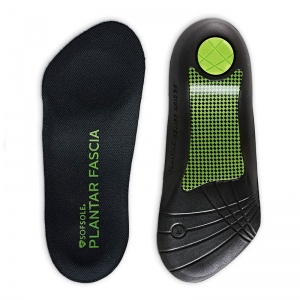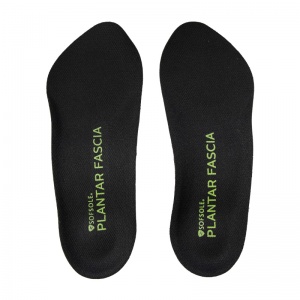| Running with Plantar Fasciitis7 July 2015 While Plantar Fasciitis can be a painful and uncomfortable condition, it is unlikely that sufferers are able (or indeed willing) to give up their normal routines as they wait for their foot to recover. Also known as Jogger’s Foot, it’s understandable that many a jogger may not be happy to suddenly halt their routines altogether, luckily for active sufferers everywhere, that is not always strictly necessary and running with Plantar Fasciitis is still possible. It is generally recommended that, as you recover from Plantar Fasciitis, the foot is rested and not placed under unnecessary strain such as when wearing unsuitable shoes or undertaking intense sport, as these are often the initial causes of the condition. However, patients may find that their symptoms alleviate when participating in light sports, and the rehabilitation of the foot by running with Plantar Fasciitis can lend itself to a better overall recovery time. Powering Through Plantar Fasciitis For those who simply cannot stand being out of action, there are special considerations the Plantar Fasciitis suffering runner should bear in mind: Stretching: Not only key to preventing Plantar Fasciitis, proper stretching can help stop the afflicted area from becoming stiff or weakening. Concentrating on the achilles tendon and plantar fascia itself is key to helping the muscle recover and prepare for exercise and should be done as often as possible throughout the day, especially in the mornings. An effective stretch of the plantar fascia should be felt in the entire arch of the foot and make exercising and general movement a much more effective or manageable task. Massage: Softly massaging the injured area is a vital part of managing and curing Plantar Fasciitis. No fancy gadgetry is necessary, simply take a suitably sized ball such as a tennis or golf ball and roll it under your foot, this is especially effective in the morning and before and after undertaking any exercise. Ice: Icing the area can also help lessen inflammation and swelling, and should be applied after undertaking any sports. Much like the massage, an iced water bottle rolled under the foot is all it takes for affective icing of the injured area. Taping: Taping around the base of the foot and along the plantar fascia can help provide extra support to the injured foot. Running surface: Know the limits of your feet when exercising during recovery from Plantar Fasciitis, stick to a soft, even surface and do not fluctuate in distances. Try to engage in exercise in a short, controlled session rather than a intense, frequently changing routine. Night Time Support: Wearing a splint at night can help the foot stretch and recover when it is otherwise out of use, it can also help lessen the pain of the first steps of the morning as it prevents the muscle from becoming as stiff as it might if left unaided throughout the night. Switching shoes: A desperate rummaging through the wardrobe in an attempt to find your super soft, sloppy old running shoes might not work out as well as you think. While Plantar Fasciitis-struck feet do benefit from cushioning in the shoe, a constant change of footwear will do nothing to help keep your feet in a controlled state of recovery. Wearing loose shoes like flip-flops also negates any good you may think an unburdened foot may do, as they provide little support for the arch and affected areas. Insoles: An essential part of keeping feet and footwear at optimum healing conditions is to implement a suitable insole. Insoles for Plantar Fasciitis running should be cushioning and contouring to help fully support the shape of your foot, while strong arch support will help pressure and weight be evenly distributed over the foot. A material that promotes shock absorption will also be greatly beneficial to sore feet undertaking light sport as this can help reduce the strain on the foot while still allowing you to reap the rewards of gentle exercise and rehabilitation. Running its coursePlantar Fasciitis is not necessarily the end of your active lifestyle, but it will certainly bring an end to its intensity. Light exercise should not demand any more of the foot than is strictly necessary and 10 minute bouts of walking can sometimes be all your injured feet can manage before the pain stops you in your tracks. With a good balance of rest, care and moderate exercise, your recovery should be complete within a matter of months, but expecting too much too soon can cause further damage that can lead to Plantar Fasciitis hounding you for the much longer term. A range of insoles to help provide the support you need while recovering from Plantar Fasciitis can be found at our store.
|











